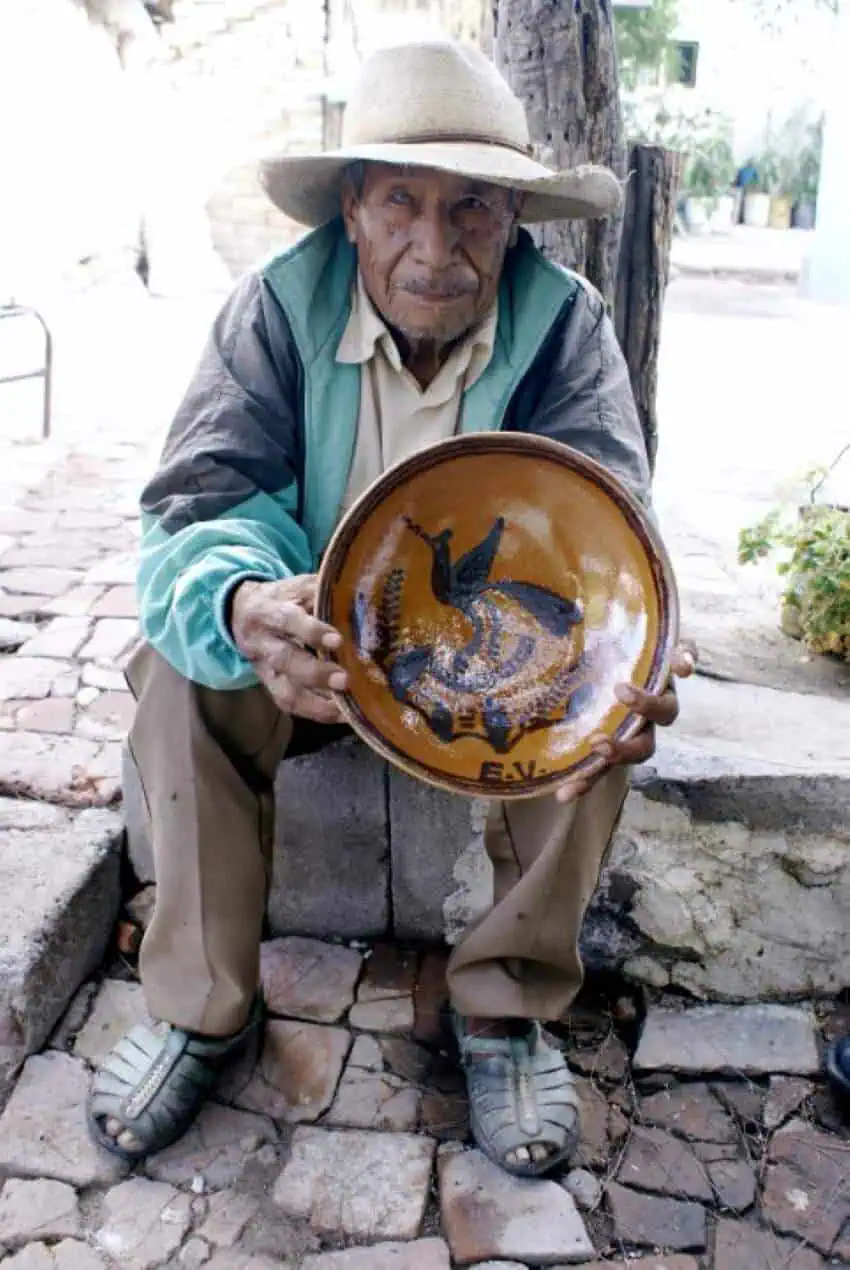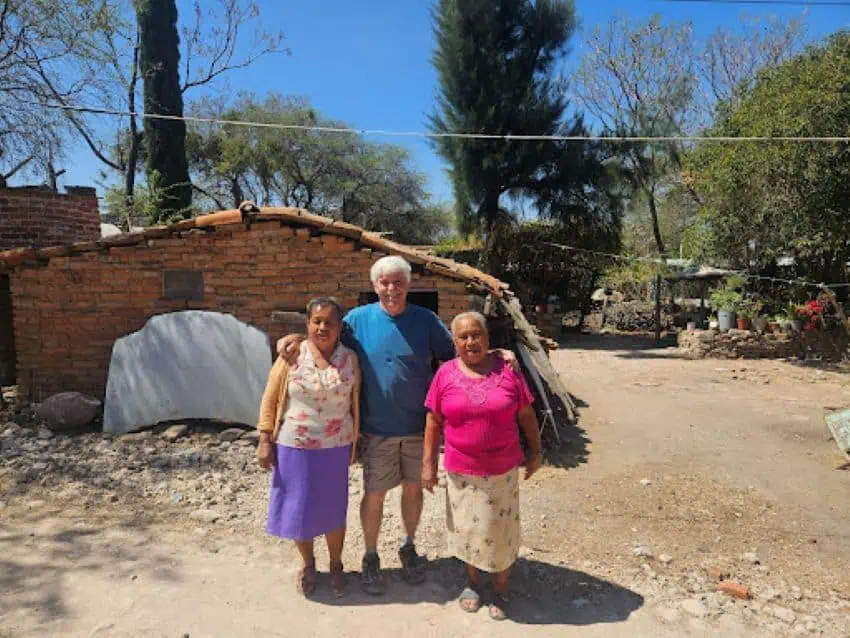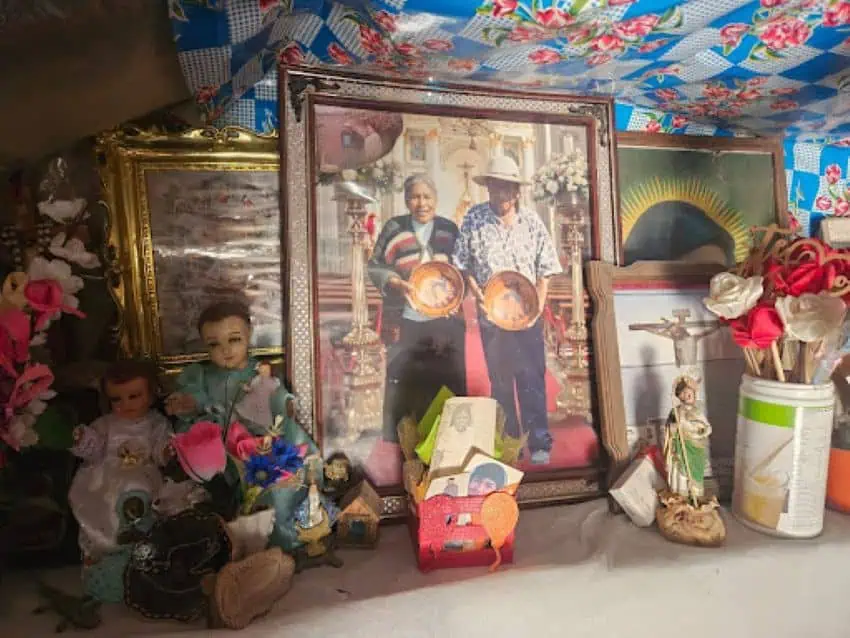The brick -making city of Pandoja crosses the Guwanjuado, and the bricks are shaped by hand and baked in rustic kilns PajioThe last potter of his family lives Nikanora Valdez.
I am not announcing, I am eager to meet this woman in her seventies, she makes a whole handmade with ceramic bowls, alive with a tradition sent from her grandfather to his father, and is now only with her.
This is the second installment Made in MexicoA series that celebrates humans behind Mexico’s vibrant creative landscape. From weavers and painters to potters, such as potties, and other craftsmen like him – we will explore traditions, challenges and successes such as weavers, painters, Silversmiths and more – to share their talent when they share their talent.
A sunburn on Sunday afternoon, my friends, Mary and Joe Molinaro, the latter is riding with a pottery artist Pines and aloe are sprayed on a moderate farm with red-brick structures.
Mary and Joe calls her when we arrive, because Valdez has no cell phone. She quickly appears from behind her workshop, where her grandfather built – she and Valdez’s father designed ceramic bowls.
Her eyes blink when she sees Molinaros; They have brought Carnidas And the new clay is part of the weekend ritual that supports his craft. I introduce me in Spanish, with a scared smile, Valdez invites me into his workshop to share his story.
“My father handed us a little ball Legitimate (Soil), ‘Go to work’, and she remembered her voice gently.
That’s her father, Estephen Waldez, a Master Potter, The one who taught Nikanora to shape the clay as a child. Estepan, who learned from Doribio, collects clay from the nearby river and converts the simple bowls drawn by animals, plants and Mexican historic people Bibila.
Essipon is not alone in his workshop. Nikanora’s mother was his wife Viviana, his partner in life and crafts. He helped for the sale of clay and packaging bowls.

First, the bowls were sold at home, in markets and city exhibitions in Comanford and San Miguel de Alende municipalities. But in time, Estepon’s pieces were widely accredited, which entered private collections and galleries, including them Domestic museum In the city of Mexico.
Although Estephen believed that more of his nine children would learn his skills, Nikanora was only interested. He learned to shape the bowls, often joined with his parents on trips that spend the ceramics. When one of the fragments of Estipon was added to a museum in Guwanjuado, Nikanora was there to see this moment.
“It is very special to see both my parents recognized,” he says with a tone of longing. “Within that, my mother was already sick. I saw them invited to get the diploma … I think I was almost cried.”
After the ceremony, Valdez was his parents, first his mother, and then his father, in the middle of his 80s. The regret that followed was deep, and that quietly, she withdrew from her family’s pottery traditions.
Waldez takes five years to touch the clay again.
An accidental meeting
In 2024, a stranger knocked on the door of Valdez and sought his father.
“The person said that he had seen a portion of my father and wanted to meet him,” he says, describing how she returned to make pottery. “But I had to tell him, ‘That is not possible. My father passed away many years ago.’
The disappointing person asked if there was any work of her father – she didn’t do that – if she works with the clay. It has been years since she created anything and that she had no good, clean dirty access, and her father once made clay to her pottery, dirty “Like flour”Or like flour.
The person offered to introduce her to American porcelain artist Joe Molinaro, a resident of San Miguel de Alende.

“That’s what started,” Valdez says, her eyes shattered with a smile. “One day, the man’s friend showed up with good clay in my house. Now he and his wife … we have become good friends.”
Molineros roamed through his garden, chatting with Valdez’s sister and stopping to say hello.
“Sometimes Joe jokes that he is his wife”I have a lot of trouble ‘I give a stone to beat Mary to him, ”she says with a suck.” Then we all laugh. “
From the clay to the finished bowl
A few weeks after my initial meeting with Valdez, I am returning with Joe and Mary, and she brings her pigments for painting and more clay, so she can show me how she creates bowls. During this time, Valdez recognizes me to his pottery workshop and lovingly invites me immediately.
First, she starts with a little clay, just like her father handed over to her when she was small. She used the ball in her arms and rolled into a big stone in her workshop, and the same father – before him, used her grandfather.

Next, when the clay is flat, she paints it in a bowl shape and carefully cut it with an excellent thread. She is doing it with the constant attention of an expert, and she has a node of the thread between her teeth, and a technique passed from her father – except that her father used the donkey’s tail hair.
Once the bowl is organized, she uses a second small, flattering clay to soften the surfaces of the form, making sure that each curve is correct. Then, she dries it, first in her workshop, then under the sun.
Waldez can make about 20 bowls in two days. Once they have dried, she draws them with the pigments that Molinaro brings, and decorate with her father’s creations: animals, plants and everyday Mexican life, ie a man sells Plates (Papasicals). She sign every part with her initials: N.V.
“This is my fatherHe proudly explains that his father also refers to his bowls by drawing his initials.
Joe takes off because he doesn’t have a kiln to shoot his pottery Greenware – Clay objects are not yet shot – to his workshop at home. There, he controls them and uses a clear glazing, and gives a durable, shiny finish for pottery.

Art, aging and everyday life
Valdez keeps her father’s legacy alive at a time, with the help of Joe, sells her Finished pieces online Without taking one percent of the commission. Moderate income from her ceramics is spent on essentials like corn she uses to make beans and fresh tortillas.
Rather than meeting her daily needs, the income has given her something meaningful: a new freedom, after she rely on her family for many years, before she creates ceramics.
Life on the farm is simple. When she does not work with the clay, Valdez is enjoying the sewing napkins, watching her flowers and walking around the land in her family for generations. She has never married and has no children, so she knows that her family’s artistic heritage will end with her.
As the years go, her body is even hurt. Sitting in his workshop at a time is getting difficult. Nevertheless, when Joe finishs a new volume bowl to sell on her behalf, Valdez feels deep within her, which reduces exhaustion.
“It feels like pride – real pride – when I say, ‘I am finished, it’s ready,” she says about every bowl. “It is good to see something made from the earth. It is now that it is used in the place where someone is used in the kitchen.”
On the way back to San Mikkal, I feel a quiet confidence when thousands of construction bricks shoot in the pantoja, and many people find Niconorah: Pottery online Help protect her story, just like those who have been honored and confirmed by her father’s art and story.
Thanks to Mary and Joe Molinaro, who was the instrument for introducing me to Nikanora and sharing their time and knowledge generously. If you want to protect the history of Nicanora and the history of her family, you can buy one of her bowl by contacting Joe directly via email (Email protected). You can also learn more about Nikanora Facebook page He has created about his work.
(Tagstotranslate) Art San Miguel de Allende (T) Artisan Bowls (T) Guanajuato State (T) Mexican Artisans (T) Nicanora Valdez (T) Pottery
Story Credit








